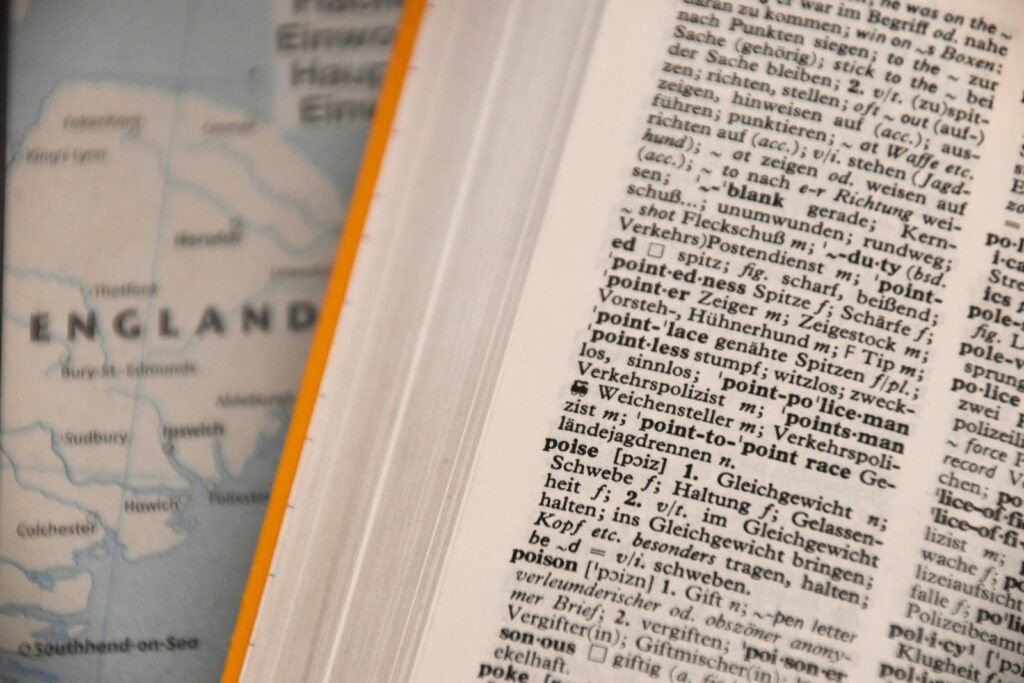The English language is one of the most widely spoken and dynamic languages in the world. It’s constantly evolving, with new words being added and old ones falling out of use. But have you ever wondered, how many words are in the English language? This question is more complex than it seems, and the answer depends on how you define a “word” and which sources you consult. In this blog, we’ll explore the fascinating world of English vocabulary, uncover the challenges of counting words, and provide insights into the sheer size and diversity of the language.
Why Is It So Hard to Count the Number of Words in English?
Before diving into the numbers, it’s important to understand why counting the words in the English language is such a challenging task. Here are some key reasons:
- What Counts as a Word?
- Do you count every form of a word (e.g., “run,” “running,” “ran”) as separate words?
- Should technical terms, slang, and regional dialects be included?
- What about archaic words that are no longer in use?
- The Ever-Expanding Nature of English
- English is a living language, and new words are added every year. For example, words like “selfie,” “blog,” and “emoji” didn’t exist a few decades ago.
- The rise of the internet and globalization has accelerated the creation of new terms and phrases.
- Different Sources, Different Counts
- Dictionaries vary in size and scope. The Oxford English Dictionary (OED) is one of the most comprehensive, but even it doesn’t include every word ever used in English.
- Some sources count compound words and hyphenated words separately, while others do not.
How Many Words Are in the English Language? The Numbers
While there’s no definitive answer, here are some estimates from reputable sources:

- The Oxford English Dictionary (OED)
- The OED contains over 600,000 words, including historical and obsolete terms. However, it doesn’t include every word in the English language, especially slang and technical jargon.
- Global Language Monitor
- This organization estimates that English has over 1 million words, including scientific terms, slang, and regional variations. However, this number is often debated because it includes many niche and rarely used words.
- Merriam-Webster Dictionary
- Merriam-Webster includes around 470,000 entries in its dictionary. Like the OED, it focuses on widely recognized words rather than every possible term.
- Average Speaker’s Vocabulary
- While the English language may contain hundreds of thousands of words, the average native English speaker knows between 20,000 and 35,000 words. This number varies based on education, profession, and exposure to different types of literature.
What Contributes to the Growth of English Vocabulary?
The English language is incredibly diverse and adaptable, which is why it continues to grow. Here are some factors that contribute to its expansion:

- Borrowing from Other Languages
- English has borrowed words from countless languages, including Latin, French, German, and Hindi. For example, “ballet” comes from French, “pajamas” from Hindi, and “kindergarten” from German.
- Scientific and Technological Advancements
- New discoveries and inventions often lead to the creation of new words. For instance, terms like “blockchain,” “nanotechnology,” and “biodegradable” have entered the lexicon in recent decades.
- Pop Culture and Social Media
- Movies, TV shows, music, and social media platforms introduce new slang and phrases. Words like “meme,” “vlog,” and “FOMO” (fear of missing out) have become part of everyday language.
- Regional Variations
- English is spoken in many countries, and each region has its own unique vocabulary. For example, British English includes words like “lorry” (truck) and “biscuit” (cookie), while American English uses “elevator” instead of “lift.”
How Many Words Do You Need to Know to Be Fluent in English?
If you’re learning English, you might be wondering how many words you need to know to achieve fluency. Here’s a breakdown:

- Basic Communication: Knowing around 1,000 to 3,000 words allows you to handle everyday conversations and understand simple texts.
- Intermediate Level: A vocabulary of 5,000 to 10,000 words enables you to read newspapers, watch movies, and engage in more complex discussions.
- Advanced Fluency: To fully understand literature, academic texts, and specialized content, you’ll need a vocabulary of 20,000 words or more.
Fun Facts About English Vocabulary
- The Longest Word in English
- The longest word in the English language is “pneumonoultramicroscopicsilicovolcanoconiosis,” a type of lung disease caused by inhaling fine silicate or quartz dust. It has 45 letters!
- Words with Multiple Meanings
- English is full of words that have multiple meanings. For example, the word “set” has over 430 definitions in the Oxford English Dictionary.
- Shortest Words
- Some of the shortest words in English are also the most commonly used, such as “I,” “a,” and “be.”
- New Words Added Annually
- Every year, dictionaries add hundreds of new words. In 2023, the Merriam-Webster Dictionary added terms like “rizz,” “prompt engineering,” and “beige flag.”
Conclusion: The Ever-Growing English Language
So, how many words are in the English language? While estimates range from 600,000 to over 1 million, the exact number is impossible to determine. What’s clear is that English is a rich, dynamic, and ever-evolving language that continues to adapt to the needs of its speakers. Whether you’re a native speaker or a learner, exploring the vast vocabulary of English can be both challenging and rewarding.

If you’re curious about expanding your own vocabulary, consider reading widely, using a dictionary or thesaurus, and staying updated on new words and trends. After all, the beauty of English lies in its diversity and ability to grow with the times.
How Often Are New Words Added to the English Language?
The English language is a living, breathing entity that constantly evolves to reflect changes in society, technology, culture, and communication. One of the most fascinating aspects of this evolution is the addition of new words. But how often are new words added to the English language? The answer is: more frequently than you might think! In this blog, we’ll explore how often new words are introduced, the factors driving their creation, and how they make their way into official dictionaries.
The Pace of New Word Creation
New words are added to the English language at a surprisingly rapid pace. Here’s a breakdown of how often this happens:
- Hundreds of New Words Annually
- Major dictionaries like the Oxford English Dictionary (OED), Merriam-Webster, and Collins Dictionary add hundreds of new words each year. For example, in 2023, Merriam-Webster added 690 new words, including “rizz,” “beige flag,” and “prompt engineering.”
- The OED typically updates its database four times a year, adding anywhere from 500 to 1,000 new words annually.
- Everyday Language Evolution
- Beyond formal dictionary additions, new words and phrases emerge daily in informal settings, such as social media, pop culture, and regional dialects. While not all of these words make it into dictionaries, they often gain widespread usage before being officially recognized.
- Historical Context
- The rate of new word creation has accelerated over time. In the past, new words were added more slowly, often through borrowing from other languages or the invention of scientific terms. Today, the internet and globalization have dramatically increased the pace of linguistic innovation.
What Drives the Creation of New Words?
New words are born out of necessity, creativity, and cultural shifts. Here are some of the key factors that contribute to the creation of new vocabulary:
- Technological Advancements
- As technology evolves, so does the language used to describe it. For example, the rise of the internet gave us words like “blog,” “emoji,” and “cybersecurity.” Similarly, advancements in artificial intelligence have introduced terms like “machine learning” and “neural network.”
- Pop Culture and Media
- Movies, TV shows, music, and social media are fertile ground for new words and phrases. For instance, the word “selfie” gained popularity in the early 2010s and was named the Oxford Dictionaries Word of the Year in 2013. Similarly, terms like “stan” (an obsessive fan) and “ghosting” (cutting off communication without explanation) originated in pop culture.
- Social and Political Changes
- Societal shifts often lead to the creation of new vocabulary. For example, the term “woke” (being aware of social injustices) gained prominence during the Black Lives Matter movement. Similarly, the COVID-19 pandemic introduced words like “quarantine,” “social distancing,” and “zoom fatigue.”
- Borrowing from Other Languages
- English has a long history of borrowing words from other languages. For example, “sushi” comes from Japanese, “café” from French, and “avatar” from Sanskrit. This trend continues today, with words like “hygge” (Danish for coziness) and “schadenfreude” (German for pleasure derived from others’ misfortune) entering the English lexicon.
- Slang and Informal Language
- Slang is a major source of new words, especially among younger generations. Words like “lit,” “yeet,” and “flex” started as slang before gaining broader acceptance. Social media platforms like TikTok and Twitter play a significant role in popularizing slang terms.
How Do New Words Make It Into Dictionaries?
Not every new word becomes part of the official English language. Dictionaries have strict criteria for adding new entries. Here’s how the process works:
- Widespread Usage
- A word must be used consistently and widely across different regions and contexts. Dictionaries track usage through books, newspapers, websites, and social media to determine if a word has gained enough traction.
- Longevity
- A word must demonstrate staying power. Dictionaries are cautious about adding trendy words that may fall out of use quickly. For example, “YOLO” (you only live once) was popular in the early 2010s but is rarely used today.
- Cultural Significance
- Words that reflect important cultural, social, or technological developments are more likely to be added. For instance, “COVID-19” was added to dictionaries almost immediately due to its global impact.
- Lexicographer Approval
- Lexicographers (dictionary editors) carefully evaluate each potential new word based on its meaning, usage, and relevance. They also consider how well it fits into the existing structure of the language.
Examples of New Words Added in Recent Years
Here are some examples of new words that have been added to major dictionaries in the past few years:
- Rizz (2023): Short for “charisma,” this term refers to someone’s ability to attract romantic or sexual partners.
- Beige Flag (2023): A trait or behavior that is neither a red flag (warning sign) nor a green flag (positive sign) in a relationship.
- Prompt Engineering (2023): The process of designing and refining inputs to generate desired outputs from AI systems.
- Goblin Mode (2022): A slang term describing unapologetically lazy or self-indulgent behavior.
- Permacrisis (2022): A term describing an extended period of instability and insecurity.
The Future of New Words in English
As long as society continues to evolve, new words will keep entering the English language. Here are some trends to watch:
- AI and Technology
- As artificial intelligence and technology advance, expect to see more terms related to AI, virtual reality, and automation.
- Climate Change
- Words related to environmental issues, such as “climate anxiety” and “carbon footprint,” are likely to become more common.
- Social Movements
- Language will continue to reflect societal changes, with new terms emerging to describe evolving concepts of identity, equality, and justice.
- Globalization
- As the world becomes more interconnected, English will continue to borrow words from other languages and cultures.
Conclusion: A Language That Never Stands Still
The English language is a dynamic and ever-changing system, with new words being added at an impressive rate. Whether through technological innovation, cultural shifts, or the creativity of speakers, the vocabulary of English continues to grow and adapt. So, the next time you hear a new word or phrase, remember: you’re witnessing the evolution of language in real time!
If you’re curious about staying updated on new words, consider following dictionary updates, reading widely, and engaging with pop culture and social media. After all, language is a reflection of who we are—and it’s always evolving.
Which Language Has the Smallest Vocabulary?
The concept of a “smallest vocabulary” is tricky because vocabulary size depends on how you define a word and what you include (e.g., slang, technical terms, dialects). However, some languages are known for having relatively small vocabularies compared to others:
- Toki Pona
- Toki Pona is a constructed language designed to be as simple as possible. It has only around 120-137 words, depending on the version. Each word is intentionally broad in meaning, allowing speakers to combine them creatively to express complex ideas.
- Pirahã
- Pirahã, an indigenous language spoken in the Amazon, is known for its simplicity. It has no numbers, colors, or fixed vocabulary for many concepts. Estimates suggest it has fewer than 1,000 words.
- Riau Indonesian
- This dialect of Indonesian is known for its minimalistic grammar and vocabulary. It relies heavily on context, allowing speakers to convey meaning with fewer words.
While these languages have small vocabularies, they are still fully functional and capable of expressing complex ideas through context, tone, and word combinations.
How Does the Vocabulary Size of English Compare to Other Languages?
English is often considered to have one of the largest vocabularies of any language, but this depends on how you measure it. Here’s a comparison:
- English
- English has an estimated 600,000 to 1 million words, including technical terms, slang, and archaic words. However, the average native speaker knows only about 20,000 to 35,000 words.
- Mandarin Chinese
- Mandarin has around 50,000 characters, but most speakers only need to know about 3,000 to 5,000 to be literate. Unlike English, Mandarin relies heavily on context and tone, which reduces the need for a large vocabulary.
- Spanish
- Spanish has approximately 150,000 to 300,000 words, depending on the dialect. Like English, it borrows heavily from other languages, but its vocabulary is smaller overall.
- French
- French has around 100,000 to 150,000 words. It is known for its precision and formal structure, but its vocabulary is smaller than English’s.
- Arabic
- Arabic has a rich vocabulary, with estimates ranging from 90,000 to 500,000 words, depending on whether you include classical and modern forms. However, most speakers use a much smaller subset in daily life.
Key Takeaway: English has a larger vocabulary than most languages, but this doesn’t necessarily make it more expressive. Other languages achieve complexity through grammar, tone, or context rather than sheer word count.
What Are Some Examples of Archaic Words Still in Use Today?
Archaic words are old terms that have fallen out of common usage but are still recognized or used in specific contexts. Here are some examples of archaic words that persist in modern English:
- Thee/Thou
- These are old forms of “you.” While rarely used in everyday speech, they appear in religious texts (e.g., the Bible) and Shakespearean literature.
- Hither
- Meaning “to this place,” this word is still used poetically or humorously (e.g., “Come hither!”).
- Whilom
- An archaic term meaning “formerly” or “once.” It occasionally appears in historical or literary contexts.
- Betwixt
- An old word for “between.” It’s sometimes used for stylistic effect or in regional dialects.
- Yonder
- Meaning “over there,” this word is still used in some rural dialects and poetic contexts.
- Methinks
- An old way of saying “I think.” It’s often used humorously or in historical reenactments.
- Ere
- Meaning “before,” this word appears in poetry and older literature (e.g., “ere the sun rises”).
- Forsooth
- An archaic term for “indeed” or “truly.” It’s often used mockingly or in historical fiction.
While these words are no longer common, they add flavor to literature, historical texts, and creative writing.
How Does the 95/5 Rule Apply to Language Learning?
The 95/5 rule is a concept in language learning that suggests you only need to know 5% of a language’s vocabulary to understand 95% of everyday conversations. Here’s how it works:
- The Basics
- In English, for example, the most common 1,000 words account for about 75% of everyday speech. The next 1,000 words bring this up to around 85-90%. By learning the top 2,000-3,000 words, you can understand the majority of spoken and written language.
- Focus on High-Frequency Words
- Instead of trying to memorize every word in the dictionary, focus on high-frequency words that appear most often in conversations, books, and media. Tools like frequency lists can help you prioritize your learning.
- Contextual Learning
- Once you know the most common words, you can often guess the meaning of less common words from context. This makes it easier to expand your vocabulary naturally over time.
- Practical Application
- For example, if you’re learning Spanish, mastering the top 1,000 words will allow you to understand most everyday interactions. Similarly, in Mandarin, knowing the most common 1,000 characters will give you a solid foundation for reading and speaking.
- Limitations
- While the 95/5 rule is a useful guideline, it doesn’t account for specialized vocabulary (e.g., medical, legal, or technical terms). To achieve fluency in specific fields, you’ll need to learn additional words.
Key Takeaway: The 95/5 rule emphasizes efficiency in language learning. By focusing on the most common words first, you can quickly build a functional vocabulary and achieve basic fluency.
Conclusion
Language is a fascinating and complex system, and understanding its nuances—whether it’s the size of a vocabulary, the persistence of archaic words, or the principles of language learning—can deepen your appreciation for how we communicate.

Whether you’re a language enthusiast, a learner, or simply curious, these insights into vocabulary and language structure can help you navigate the ever-evolving world of linguistics.
How Does the Vocabulary Size of Native Speakers Differ from Non-Native Speakers?
The vocabulary size of native speakers and non-native speakers can vary significantly due to several factors:
- Native Speakers
- Average Vocabulary Size: Native English speakers typically know between 20,000 and 35,000 words, depending on their education, reading habits, and exposure to diverse language contexts.
- Depth of Understanding: Native speakers often have a deeper understanding of word nuances, idiomatic expressions, and cultural references.
- Passive vs. Active Vocabulary: Native speakers usually have a larger passive vocabulary (words they understand but don’t use) compared to their active vocabulary (words they use regularly).
- Non-Native Speakers
- Average Vocabulary Size: Non-native speakers often know between 2,000 and 10,000 words, depending on their proficiency level. Advanced learners might know up to 20,000 words.
- Learning Context: Non-native speakers may focus on high-frequency words and practical vocabulary, which can limit their exposure to less common or specialized terms.
- Language Exposure: Non-native speakers might lack exposure to idiomatic expressions, slang, and regional variations, which are more naturally acquired by native speakers.
Key Takeaway: While native speakers generally have a larger and more nuanced vocabulary, non-native speakers can achieve impressive proficiency by focusing on high-frequency words and practical usage.
What Factors Contribute to the Large Vocabulary Size in English?
English has one of the largest vocabularies of any language, and several factors contribute to this:
- Historical Influences
- English has borrowed extensively from other languages, including Latin, French, German, and Norse. For example, words like “ballet” (French), “piano” (Italian), and “tsunami” (Japanese) have been incorporated into English.
- Global Spread
- As a global lingua franca, English has absorbed words from cultures and languages worldwide. This includes terms like “safari” (Swahili), “yoga” (Sanskrit), and “kimono” (Japanese).
- Scientific and Technological Advancements
- English is the dominant language of science, technology, and innovation. New discoveries and inventions often lead to the creation of new words, such as “blockchain,” “nanotechnology,” and “biodegradable.”
- Pop Culture and Media
- Movies, TV shows, music, and social media introduce new slang and phrases. Words like “selfie,” “meme,” and “vlog” have become part of everyday language.
- Flexibility and Adaptability
- English is highly adaptable, allowing for the creation of new words through compounding (e.g., “sunflower”), blending (e.g., “brunch”), and affixation (e.g., “unfriend”).
Key Takeaway: The large vocabulary size of English is a result of its historical influences, global spread, and adaptability to new cultural and technological developments.
How Does the Vocabulary Size of English Compare to Languages Like German or French?
Comparing the vocabulary sizes of English, German, and French reveals interesting differences:
- English
- Estimated Vocabulary: 600,000 to 1 million words.
- Characteristics: English has a vast and diverse vocabulary due to its history of borrowing from other languages and its role as a global lingua franca.
- German
- Estimated Vocabulary: 200,000 to 300,000 words.
- Characteristics: German is known for its compound words, which can create long, specific terms (e.g., “Schadenfreude” – pleasure from others’ misfortune). However, its overall vocabulary is smaller than English’s.
- French
- Estimated Vocabulary: 100,000 to 150,000 words.
- Characteristics: French has a more formal and precise structure, with a focus on clarity and elegance. Its vocabulary is smaller but highly specialized.
Key Takeaway: English has a significantly larger vocabulary than German or French, largely due to its extensive borrowing and global influence.
Are There Any Languages with a Smaller Vocabulary That Are Still Widely Spoken?

Yes, some languages with relatively small vocabularies are still widely spoken:
- Mandarin Chinese
- Vocabulary Size: Around 50,000 characters, but only 3,000 to 5,000 are needed for literacy.
- Usage: Mandarin is the most spoken language in the world, with over 1 billion speakers.
- Indonesian
- Vocabulary Size: Approximately 50,000 words.
- Usage: Indonesian is spoken by over 200 million people and serves as a lingua franca in a linguistically diverse region.
- Swahili
- Vocabulary Size: Around 20,000 to 30,000 words.
- Usage: Swahili is spoken by over 100 million people in East Africa and is an official language of the African Union.
Key Takeaway: Even with smaller vocabularies, these languages are widely spoken and fully functional, demonstrating that vocabulary size isn’t the sole determinant of a language’s utility or popularity.
How Does the Vocabulary Size of English Impact Its Use in International Communication?
The large vocabulary size of English has both advantages and challenges in international communication:
- Advantages
- Precision: English’s extensive vocabulary allows for precise expression, making it effective for technical, scientific, and legal communication.
- Flexibility: The ability to borrow and adapt words from other languages makes English versatile and inclusive.
- Global Reach: As a global lingua franca, English facilitates communication across diverse cultures and regions.
- Challenges
- Complexity: The large vocabulary can be overwhelming for non-native speakers, making English difficult to learn and master.
- Ambiguity: The abundance of synonyms and nuanced meanings can lead to misunderstandings, especially in international contexts.
- Cultural Bias: English’s dominance can overshadow other languages and cultures, leading to linguistic imperialism.
Key Takeaway: While English’s large vocabulary enhances its precision and flexibility, it also presents challenges for learners and can contribute to cultural and linguistic imbalances.
Conclusion
The vocabulary size of a language is influenced by its history, culture, and global role. English, with its vast and diverse vocabulary, stands out as a powerful tool for international communication, but it also poses challenges for learners and non-native speakers. Understanding these dynamics can help us appreciate the richness of language and the importance of linguistic diversity in a globalized world.
How Does the Vocabulary Size of German Compare to French?
The vocabulary sizes of German and French differ due to their linguistic structures, historical influences, and cultural contexts:
- German
- Estimated Vocabulary: 200,000 to 300,000 words.
- Characteristics: German is known for its compound words, which allow for the creation of long, specific terms (e.g., “Schadenfreude” – pleasure from others’ misfortune). This compounding ability can make the vocabulary seem larger, as new words are formed by combining existing ones.
- French
- Estimated Vocabulary: 100,000 to 150,000 words.
- Characteristics: French has a more formal and precise structure, with a focus on clarity and elegance. Its vocabulary is smaller but highly specialized, often borrowing from Latin and Greek.
Key Takeaway: German has a larger vocabulary than French, largely due to its compounding ability and the creation of specific terms. French, while smaller in vocabulary size, is known for its precision and elegance.
What Are Some Unique Features of German Vocabulary That Set It Apart from English?
German vocabulary has several unique features that distinguish it from English:
- Compound Words
- German is famous for its compound words, which can be very long and descriptive. For example, “Donaudampfschifffahrtsgesellschaftskapitän” means “Danube steamship company captain.” This feature allows for precise and specific terminology.
- Gendered Nouns
- German nouns have three genders: masculine, feminine, and neuter. This affects not only the articles (der, die, das) but also adjective endings and pronoun usage.
- Case System
- German uses a case system (nominative, accusative, dative, and genitive) that influences the form of articles, adjectives, and nouns. This adds a layer of complexity to vocabulary usage.
- Loanwords and Calques
- While German has borrowed words from other languages, it often creates calques (literal translations) instead of adopting foreign terms directly. For example, “Handy” (mobile phone) is a German calque.
- Formal and Informal Address
- German has distinct words for formal and informal address (“Sie” for formal, “du” for informal), which affects vocabulary usage in social contexts.
Key Takeaway: German’s compound words, gendered nouns, case system, and formal/informal distinctions make its vocabulary unique and distinct from English.
How Do Dialects and Regional Variations Impact the Vocabulary Size of German?
Dialects and regional variations significantly impact the vocabulary size and diversity of German:
- Dialectal Diversity
- Germany has a rich variety of dialects, such as Bavarian, Swabian, and Low German. Each dialect has its own unique words and expressions, contributing to the overall vocabulary size.
- Regional Vocabulary
- Different regions may use distinct terms for the same object or concept. For example, the word for “potato” can be “Kartoffel” in standard German, “Erdapfel” in Austria, and “Grumbeere” in parts of southwestern Germany.
- Influence on Standard German
- Standard German (Hochdeutsch) incorporates words from various dialects, enriching its vocabulary. However, many dialect-specific words are not included in standard dictionaries.
- Cultural Identity
- Dialects and regional variations are an important part of cultural identity. They preserve historical and cultural heritage, adding depth to the language.
Key Takeaway: Dialects and regional variations significantly enrich German vocabulary, adding diversity and cultural depth to the language.
What Percentage of English Vocabulary Comes from Latin and Greek?
A substantial portion of English vocabulary has Latin and Greek origins, especially in scientific, technical, and academic contexts:
- Latin Influence
- Percentage: Approximately 60% of English words have Latin roots.
- Examples: “Animal,” “decimal,” “individual,” “solar.”
- Greek Influence
- Percentage: Around 6% of English words have Greek roots.
- Examples: “Democracy,” “philosophy,” “telephone,” “biology.”
- Combined Influence
- Together, Latin and Greek account for a significant portion of English vocabulary, particularly in fields like medicine, law, and science. For example, medical terms like “cardiology” (Greek) and “dental” (Latin) are derived from these classical languages.
Key Takeaway: Latin and Greek have had a profound impact on English vocabulary, contributing to its richness and versatility, especially in specialized fields.
How Does the Vocabulary Size of French Influence Its Use in International Communication?
The vocabulary size of French, while smaller than English’s, plays a significant role in its use in international communication:
- Precision and Clarity
- French is known for its precision and clarity, making it effective for diplomatic, legal, and academic communication. Its smaller but highly specialized vocabulary allows for exact expression.
- Cultural Influence
- French has a rich cultural heritage, particularly in literature, art, and cuisine. This cultural influence enhances its appeal and utility in international contexts.
- Global Reach
- French is an official language of many international organizations, including the United Nations, the European Union, and the African Union. Its vocabulary is tailored to meet the needs of these institutions.
- Language of Diplomacy
- Historically, French has been the language of diplomacy. Its vocabulary includes many terms specifically related to international relations and diplomacy.
- Challenges
- The smaller vocabulary size can sometimes limit expressiveness, especially in technical and scientific fields where English dominates. However, French often borrows or adapts terms to fill these gaps.
Key Takeaway: While French has a smaller vocabulary than English, its precision, cultural influence, and role in international organizations make it a valuable language for global communication.
Conclusion
The vocabulary sizes of German and French, along with their unique features and influences, highlight the diversity and complexity of languages. Understanding these aspects can deepen our appreciation for linguistic richness and the role of language in international communication. Whether it’s the compound words of German, the precision of French, or the classical influences on English, each language offers unique insights into human expression and cultural identity.
What Factors Contribute to the Creation of New Words in the English Language?
The creation of new words in English is driven by a variety of factors, reflecting the language’s adaptability and responsiveness to societal changes. Here are some key contributors:
- Technological Advancements
- New technologies often require new terminology. For example, the rise of the internet introduced words like “blog,” “emoji,” and “cybersecurity.” Similarly, advancements in artificial intelligence have given us terms like “machine learning” and “neural network.”
- Pop Culture and Media
- Movies, TV shows, music, and social media are fertile grounds for new words and phrases. For instance, the word “selfie” gained popularity in the early 2010s and was named the Oxford Dictionaries Word of the Year in 2013. Similarly, terms like “stan” (an obsessive fan) and “ghosting” (cutting off communication without explanation) originated in pop culture.
- Social and Political Changes
- Societal shifts often lead to the creation of new vocabulary. For example, the term “woke” (being aware of social injustices) gained prominence during the Black Lives Matter movement. Similarly, the COVID-19 pandemic introduced words like “quarantine,” “social distancing,” and “zoom fatigue.”
- Borrowing from Other Languages
- English has a long history of borrowing words from other languages. For example, “sushi” comes from Japanese, “café” from French, and “avatar” from Sanskrit. This trend continues today, with words like “hygge” (Danish for coziness) and “schadenfreude” (German for pleasure derived from others’ misfortune) entering the English lexicon.
- Slang and Informal Language
- Slang is a major source of new words, especially among younger generations. Words like “lit,” “yeet,” and “flex” started as slang before gaining broader acceptance. Social media platforms like TikTok and Twitter play a significant role in popularizing slang terms.
- Scientific and Medical Discoveries
- New discoveries and inventions often lead to the creation of new words. For instance, terms like “blockchain,” “nanotechnology,” and “biodegradable” have entered the lexicon in recent decades.
Key Takeaway: The creation of new words in English is driven by technological advancements, pop culture, social and political changes, borrowing from other languages, slang, and scientific discoveries.
How Do New Words Typically Spread from Informal Use to Dictionary Inclusion?
The journey of a new word from informal use to dictionary inclusion involves several stages:
- Emergence
- New words often emerge in specific communities or contexts, such as social media, subcultures, or professional fields. For example, “selfie” originated in online communities before becoming mainstream.
- Popularization
- The word gains traction through widespread use in media, conversations, and online platforms. Influencers, celebrities, and viral content can accelerate this process.
- Documentation
- Lexicographers (dictionary editors) monitor language use through books, newspapers, websites, and social media. They track how frequently and widely the word is used.
- Evaluation
- Lexicographers evaluate the word based on criteria such as:
- Frequency of Use: How often the word appears in written and spoken language.
- Breadth of Use: Whether the word is used across different regions and contexts.
- Longevity: Whether the word shows staying power or is just a passing trend.
- Cultural Significance: Whether the word reflects important social, cultural, or technological developments.
- Inclusion
- If the word meets the criteria, it is added to the dictionary. For example, “tweet” was added to the Oxford English Dictionary in 2013 after becoming a ubiquitous term in the context of Twitter.
Key Takeaway: New words spread from informal use to dictionary inclusion through a process of emergence, popularization, documentation, evaluation, and finally, inclusion based on widespread and sustained usage.
What Role Does Technology Play in the Development of New English Words?
Technology plays a pivotal role in the development of new English words, influencing both their creation and dissemination:
- Creation of New Terms
- Technological advancements often necessitate new terminology. For example, the development of the internet led to words like “blog,” “spam,” and “firewall.” Similarly, advancements in artificial intelligence have introduced terms like “chatbot” and “deepfake.”
- Dissemination of New Words
- Social media platforms, blogs, and online forums accelerate the spread of new words. For instance, “meme” and “vlog” gained popularity through online communities before entering mainstream usage.
- Globalization
- Technology facilitates global communication, leading to the borrowing and adaptation of words from other languages. For example, “emoji” (from Japanese) and “hashtag” (from American English) have become global terms.
- Language Evolution
- Technology influences how language evolves, with abbreviations, acronyms, and emojis becoming integral to digital communication. Terms like “LOL” (laugh out loud) and “BRB” (be right back) originated in online chats.
Key Takeaway: Technology drives the creation and dissemination of new English words, reflecting the rapid pace of innovation and the global nature of digital communication.
How Do Dictionary Editors Decide Which New Words to Include?
Dictionary editors, or lexicographers, follow a rigorous process to decide which new words to include:
- Monitoring Language Use
- Lexicographers track language use through a variety of sources, including books, newspapers, websites, social media, and spoken language corpora.
- Criteria for Inclusion
- Words are evaluated based on several criteria:
- Frequency: How often the word is used.
- Breadth: Whether the word is used across different regions and contexts.
- Longevity: Whether the word shows staying power or is just a passing trend.
- Cultural Significance: Whether the word reflects important social, cultural, or technological developments.
- Documentation and Evidence
- Lexicographers collect evidence of the word’s usage, including citations from reputable sources. This helps ensure that the word is well-established and not just a fleeting trend.
- Expert Review
- The word is reviewed by a panel of experts who consider its relevance, meaning, and potential impact on the language.
- Inclusion and Definition
- If the word meets the criteria, it is added to the dictionary with a clear definition, usage examples, and etymological information.
Key Takeaway: Dictionary editors use a systematic approach to decide which new words to include, based on frequency, breadth, longevity, cultural significance, and expert review.
Conclusion
The creation and inclusion of new words in the English language are dynamic processes influenced by technological advancements, pop culture, social changes, and global communication. Understanding how new words emerge, spread, and gain official recognition provides valuable insights into the ever-evolving nature of language. Whether it’s a tech term, a slang word, or a borrowed phrase, each new addition enriches the tapestry of English, reflecting the creativity and adaptability of its speakers.
